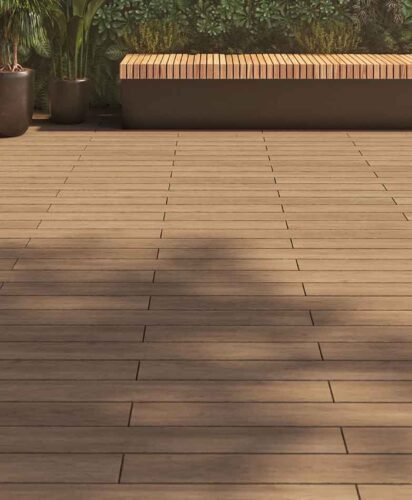As our ability to manipulate substances and manufacture increasingly complex and effective synthetics has improved, the range of materials available to construction professionals has increased substantially. With decking, specifiers, architects, and designers can now select from composite, aluminium and Vitrified Composite® boards. As there is an increased focus on non-combustibility, we have purposefully left out wood from this article.
Which you choose will largely depend on the specifics of your project requirements. In this guide to decking materials, we provide detailed information on the most popular materials available and discuss their advantages and disadvantages. We finish by exploring how you can make an informed decision and whether some materials are better suited to contemporary decking projects than others.
Composite decking
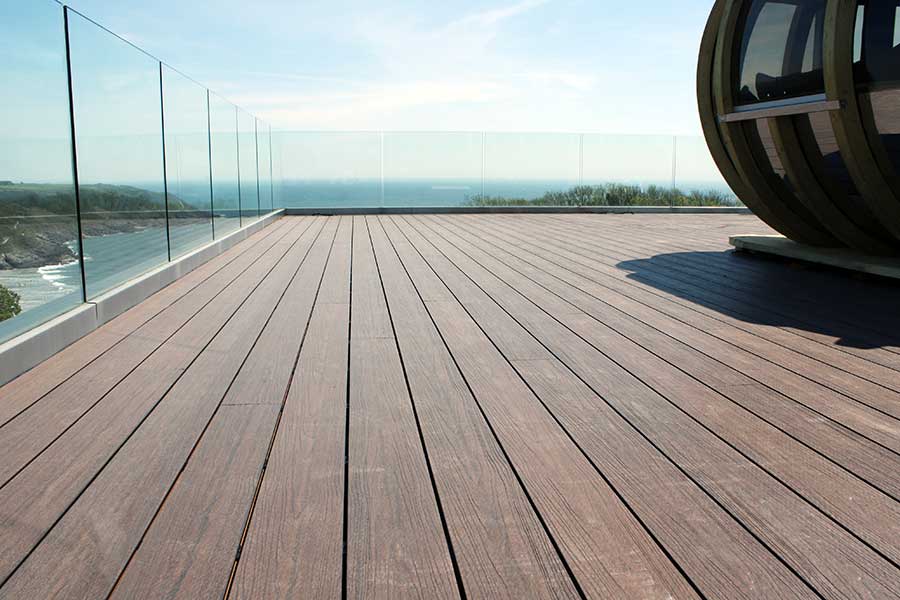
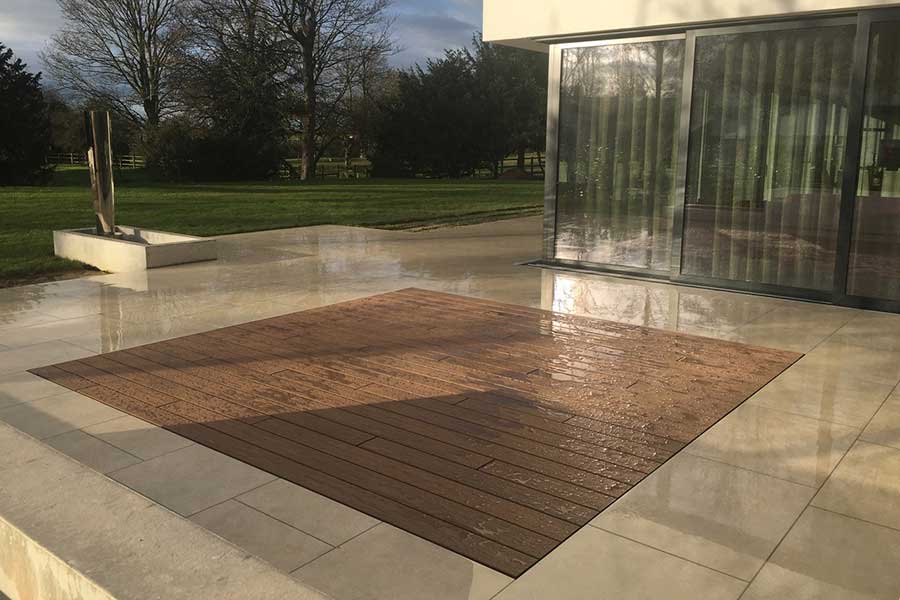
Composite decking is made from a combination of wood fibres or wood flour, plastic and binding agents. This combination creates a durable and low-maintenance decking material that often mimics the look of traditional wood decking while offering several advantages.
It is important to note that there can be variations in the composition of composite decking products between different manufacturers. As a result, the product quality can vary drastically.
Advantages and disadvantages of composite decking
Composite decking is valued for its durability, resistance to rot and moisture. As such, it is a popular option in wet or humid climates. It does not splinter, crack, or wrap as weather conditions change and is designed to last a considerable amount of time. Unlike other types of decking, it requires relatively little maintenance. Rather than applying regular coats of paint, stain, or sealant, you simply need to clean the decking with soap and water and keep it free of debris that could scratch the surface.
There are relatively few disadvantages associated with composite decking. When it comes to environmental impact, it is worth noting that many composite decking boards contain plastic. However, many manufacturers now use recycled materials in their boards, making it a more sustainable option.
Aluminium decking
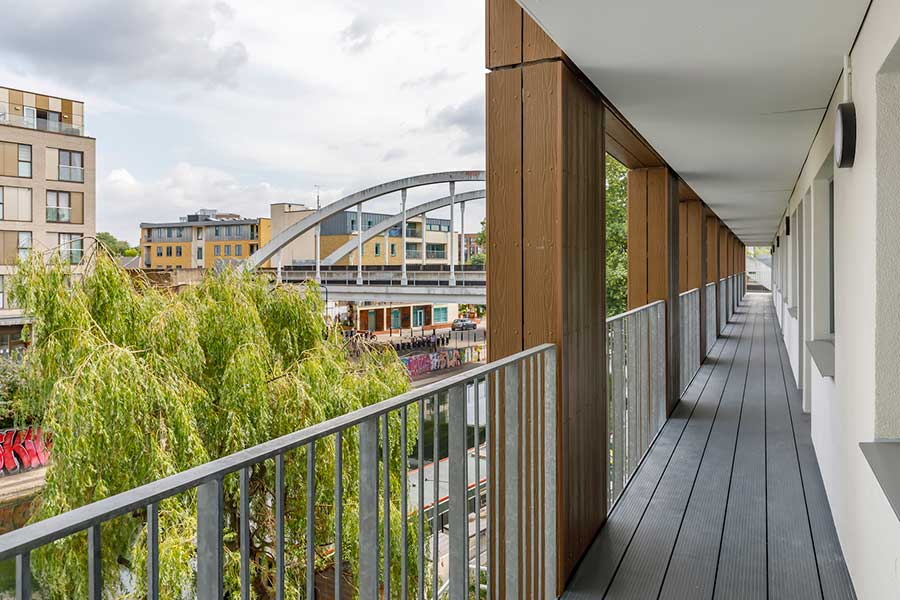
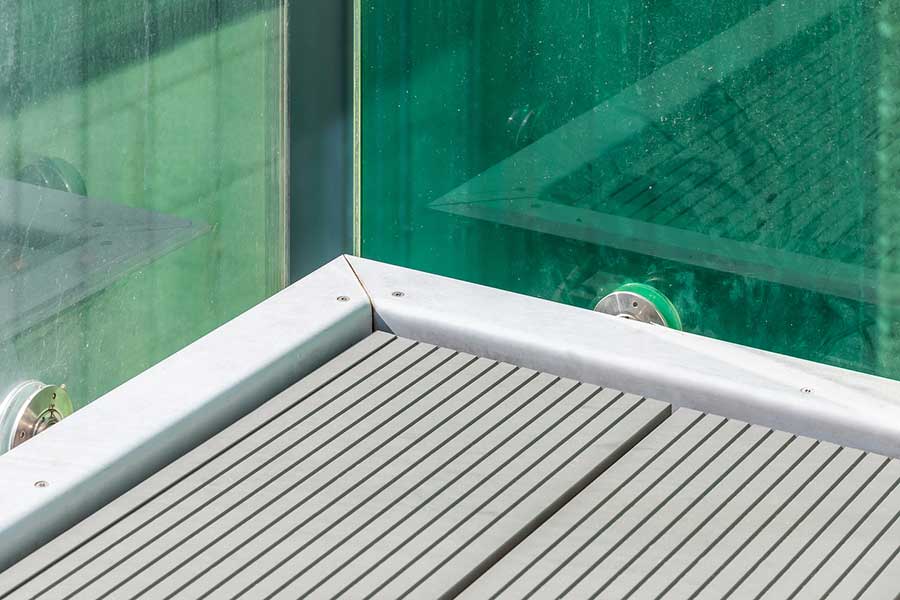
Aluminium decking is a popular choice for projects that require a non-combustible decking material that boasts a unique finish and complements contemporary architecture and modern decking designs. Like many other decking materials, aluminium can be incorporated into highly customisable decking systems that offer construction professionals total control.
Advantages and disadvantages of aluminium decking
Aluminium is specified for its durability and low maintenance requirements. It is resistant to rust, corrosion, and decay, making it suitable for areas that experience considerable amounts of rain or high humidity. Regular cleaning with water and soap is sufficient to maintain the material’s finish and their long lifespan ensures boards don’t need frequent replacement.
Moreover, aluminium boasts several additional advantages. It is a lightweight material, making it easier to handle, manipulate and install and it is, of course, non-combustible. It complies with building safety fire regulations and can be used on the exterior of high-rise residential buildings. Finally, aluminium can be recycled, lowering its environmental footprint by allowing for reuse.
Aluminium decking can have a higher upfront cost when compared to certain composite options. It is worth noting, however, that this does not necessarily mean aluminium suffers from a higher long-term cost.
Vitrified Composite® decking
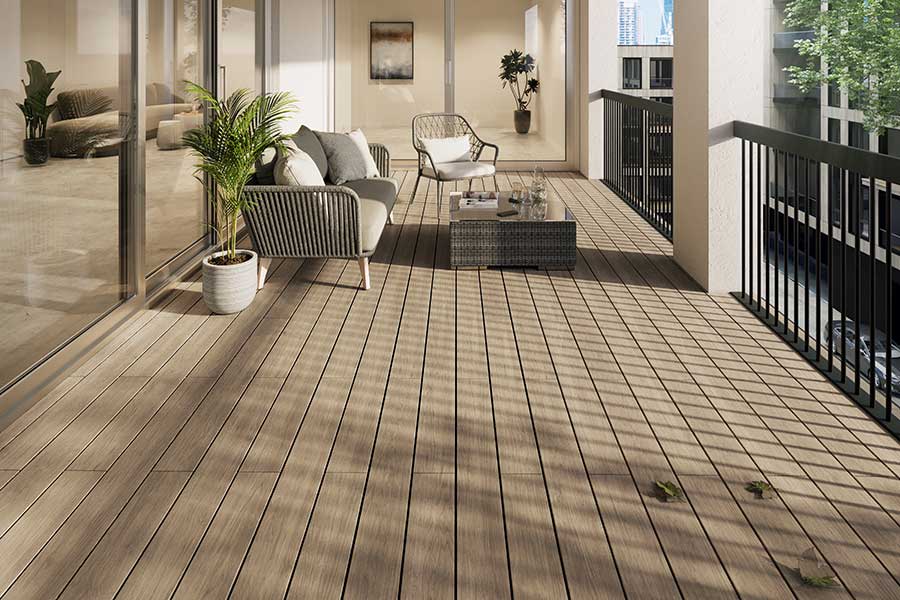
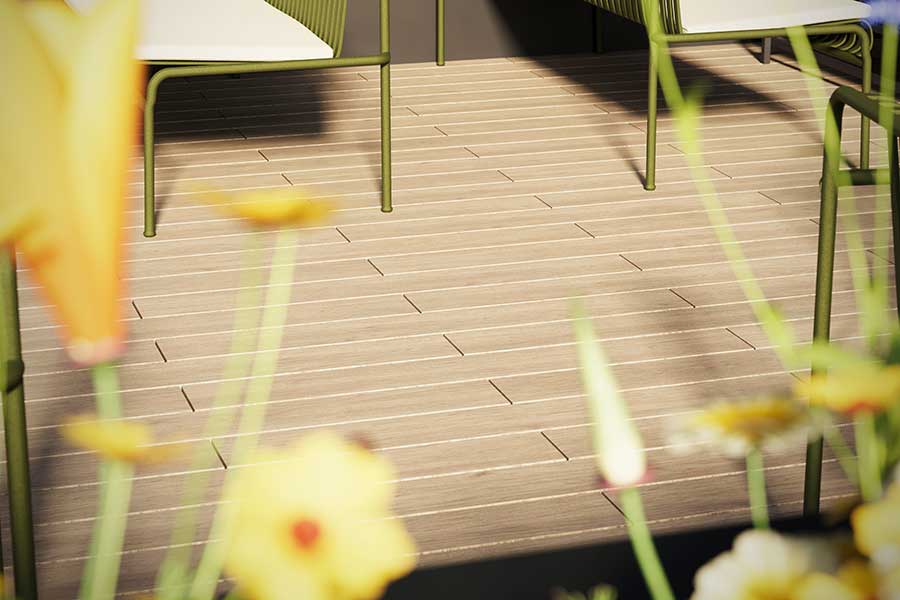
RYNO’s Vitrified Composite decking is an entirely new decking material that benefits from a stunningly realistic hardwood effect finish and several stand-out performance benefits. Our Vitrified Composite decking boards are extruded from a combination of clays and feldspar and fired. The process exposes these ingredients to extreme heat and rapid cooling, known as vitrification, and is similar to the process used to create porcelain.
Advantages and disadvantages of Vitrified Composite decking
As well as a uniquely natural wood-effect finish, RYNO’s Vitrified Composite boards are non-combustible and benefit from a Class A1 fire rating. It makes them suitable for remediation work and residential high-rise construction projects. Excellent slip resistance guarantees safety, while the scratch-resistant surface ensures they retain their pristine finish. Beyond cleaning with soap and water, no additional maintenance is required, making them a fantastic choice for high-traffic areas.
Which decking material is right for you?
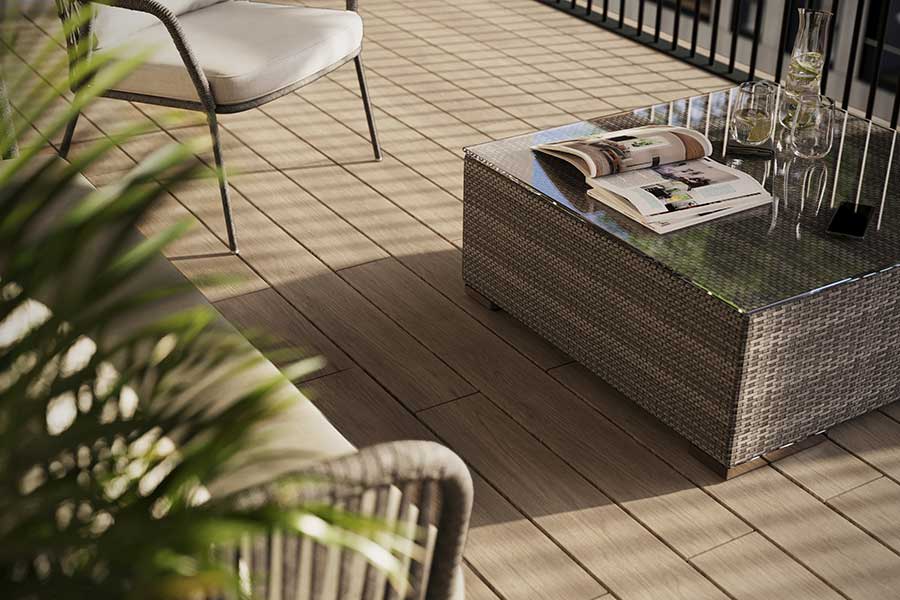
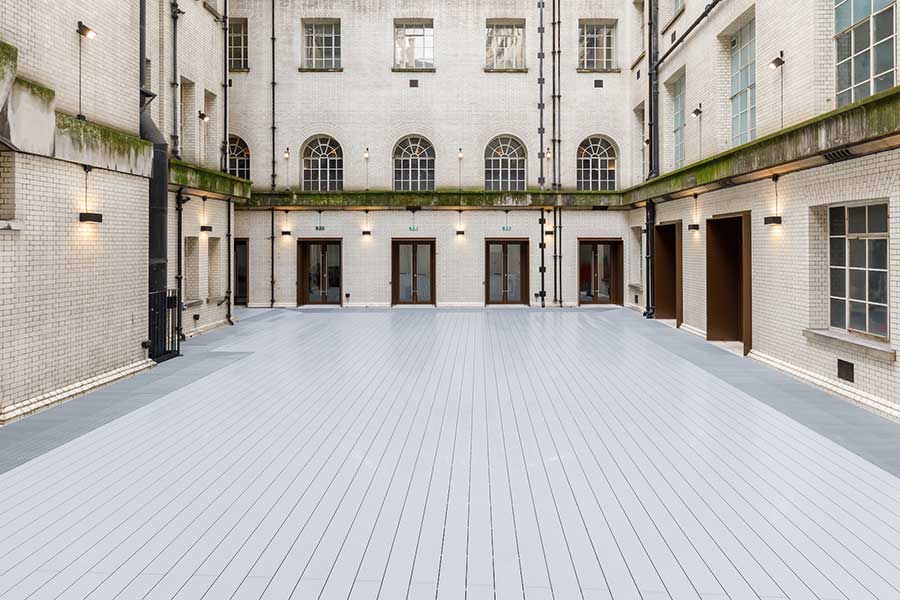
Each decking material mentioned in this in-depth guide to decking materials has unique characteristics, advantages, and disadvantages. Which you choose should depend on your project requirements, application, and operational restrictions. For instance, certain types of installation may require you to select a particular type of material.
Despite this, several materials boast significant performance benefits. More and more, the remediation projects that we are asked to help with involve replacing rotting wood with aluminium, composite and Vitrified Composite alternatives, all of which are vast improvements on traditional decking materials with an unparalleled step-up in performance
and longevity. Even if you prefer the natural wood look and are not bound by changes in fire-safety regulations, consider that Vitrified Composite decking now achieves an almost indistinguishable finish and is non-combustible, slip, rot, insect and weather-resistant and requires far less maintenance. As an IGNO® system, Vitrified Composite comes with a 30-year warranty and a 60-year design life, which is far beyond the reach of its natural counterpart.
Though these materials may have a higher up-front cost than timber, they represent a far better, and safer investment over the long run, saving time and money by reducing maintenance work and avoiding substantial repair and replacement costs.
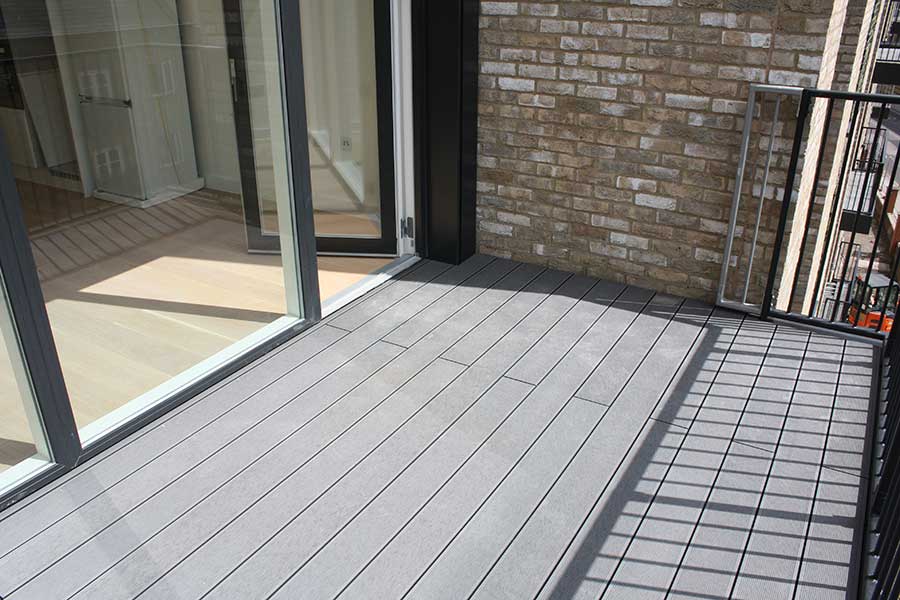
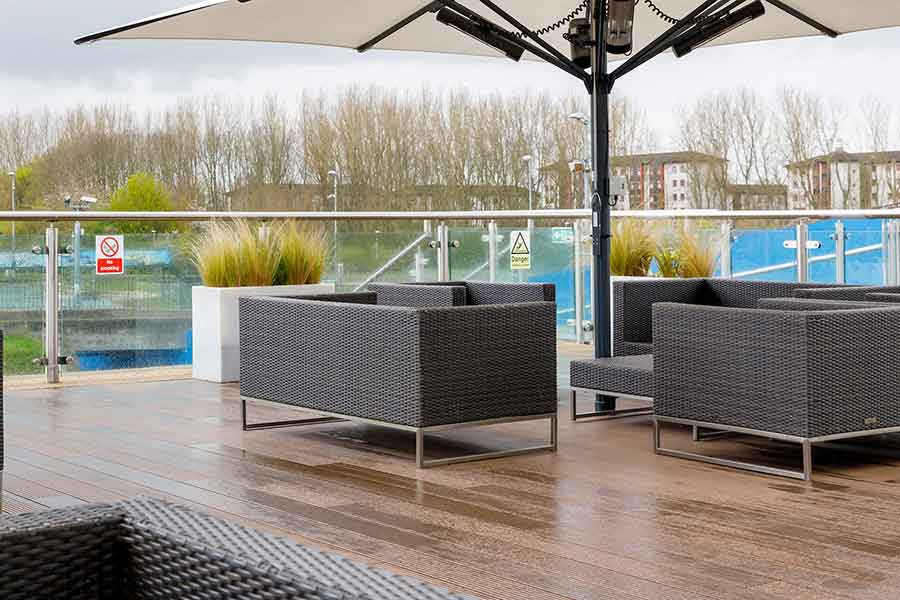
How can RYNO help you choose the right decking?
If you require assistance selecting the right decking for your construction project, we recommend checking out our Smart Decking Systems or getting in touch with our expert advisors. The RYNO team has over 30 years of experience delivering innovative paving, decking, and roofing solutions and can help you identify the material and system that best meets the project specifications. We understand the complexities inherent in construction projects and stay one step ahead of the latest regulatory developments, ensuring our decking systems are compliant, safe and easy to install, and keep your clients happy.
